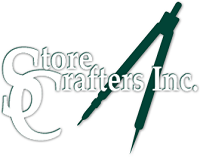Trade Area Analysis
Defining a specific trade area is a fundamental step in any business market analysis. Determining a trade area helps to establish boundaries around the geographic regions where up to 75 percent of your customers are likely to come from. A thorough trade area analysis can also help you uncover key demographic information about your customers that allows you to more precisely target and maximize your marketing efforts.
Types of Trade Areas
Trade areas can be broken down into two basic types:
- Convenience: A convenience trade area analysis takes into consideration the products and services consumers need/purchase on a regular basis. Examples include food, gasoline and household products. Consumers typically prefer to purchase these commodities from businesses that are close to home.
- Destination: This refers to the purchase of “big ticket” items such as appliances, vehicles and furniture. A destination trade area tends to be larger in scope, as customers are more willing to travel in order to find the best deal.
Key Trade Area Factors
A trade area analysis should be conducted on a regular basis and should take into account a number of factors. Examples include:
- Population: In general, the larger the population base, the larger the given trade area will be. A population increase or decline within a geographic region will have a direct impact on the trade area.
- New store locations: Adding new stores within a trade area can have an effect on your overall sales, such as when a store is opened too closely to another in an already saturated market. The appearance of a new competitor is also likely to have an influence on the trade area.
- Additional attractions: The addition of new attraction in a trade area can have a dramatic impact on existing businesses. For instance, a new sports arena or stadium can draw customers who will frequent the shops, bars and restaurants in the surrounding neighborhood.
- Nearby business districts: The proximity of competing business districts will impact your trade area. As a general rule, the farther away a competing district is, the less likely consumers will travel to that area to shop.
Using Maps as Trade Area Analysis Tools
Business Maps are an extremely valuable trade-area analysis tool as they help you visualize specific areas of interest exposing hidden sales opportunities and possible gaps in your marketing strategies. MapBusinessOnline is an affordable, easy-to-use online mapping software that is an effective trade-area analysis tool helping you:
- Design and visualize specific marketing territories.
- Perform comprehensive market analysis across multiple locations.
- Illustrate key Census demographic data by ZIP code, county, state or census tract.
- Create color-coded map views that emphasize customer densities or purchasing trends within a trade-area.
- Easily share trade-area web maps with your colleagues.
Discover how easy it is to create trade area analysis maps by taking advantage of our free mapping software trial offer!







